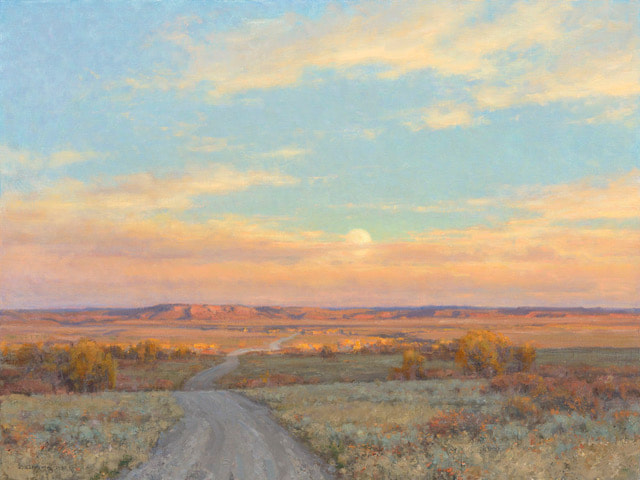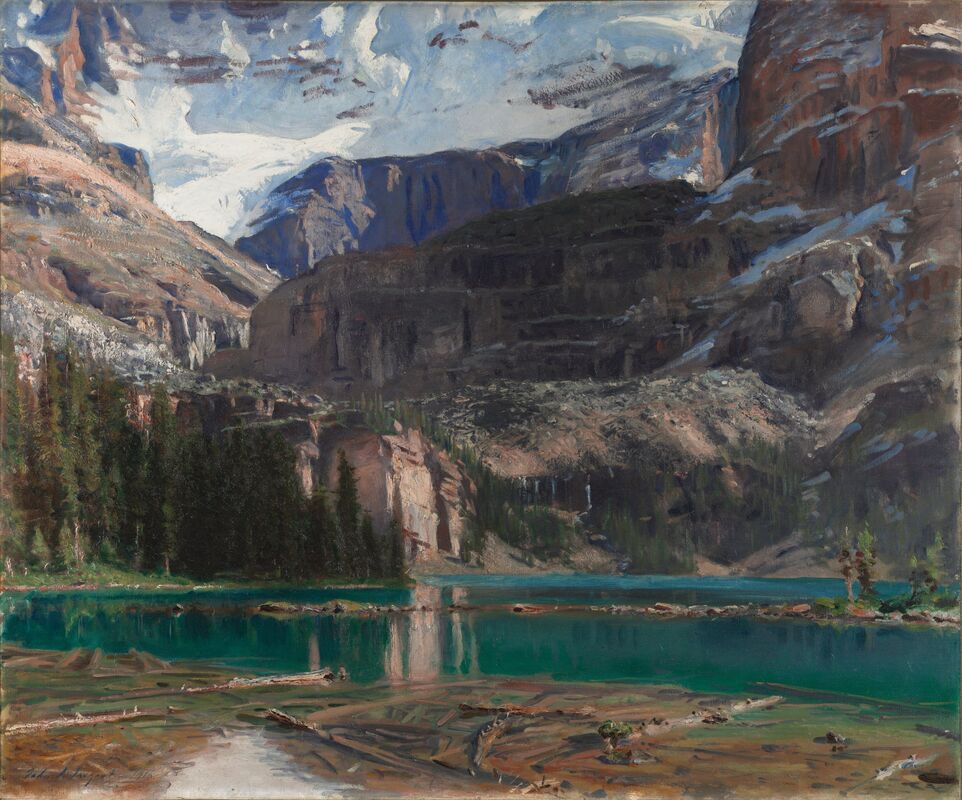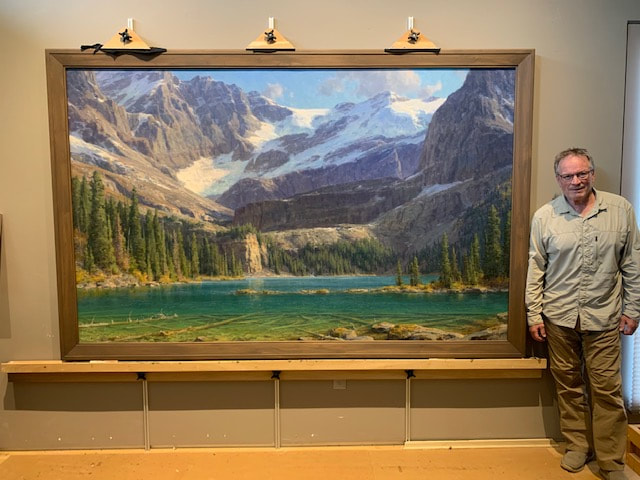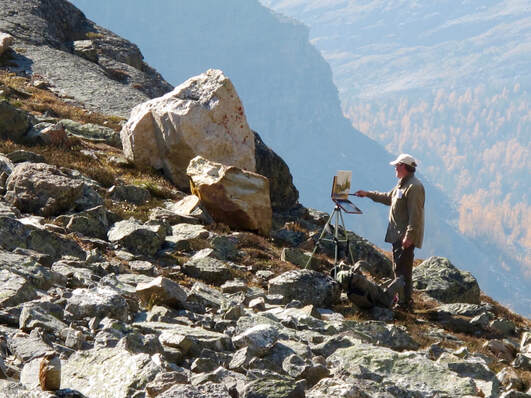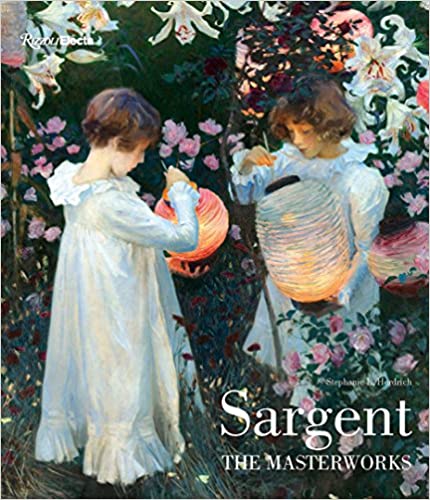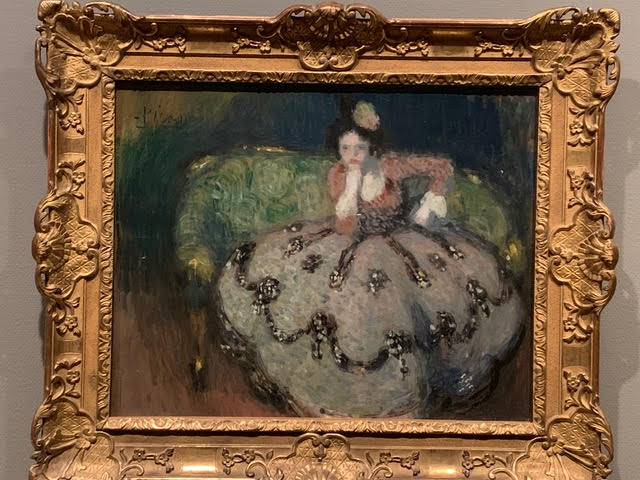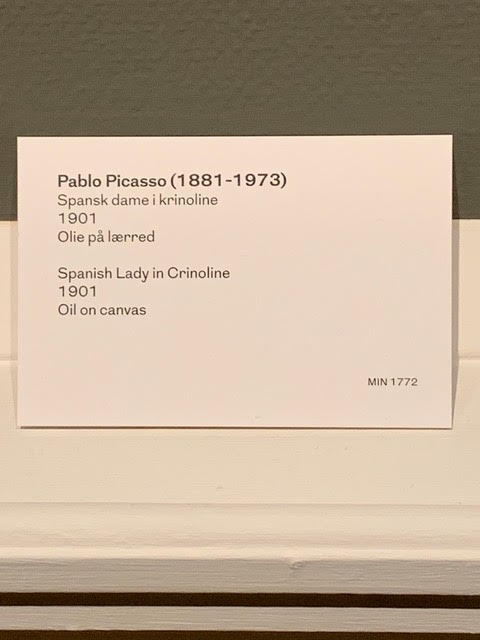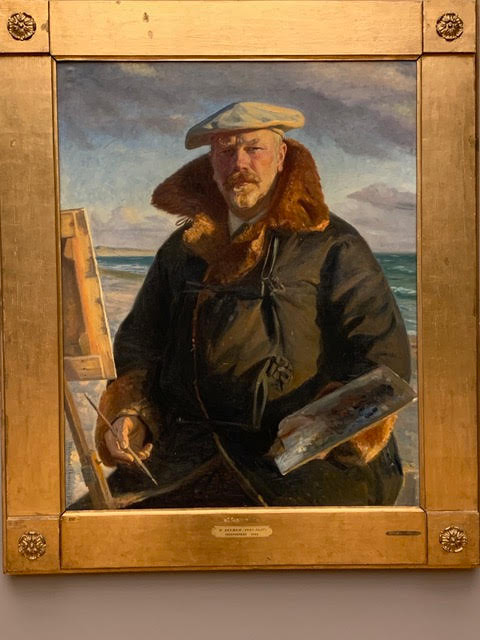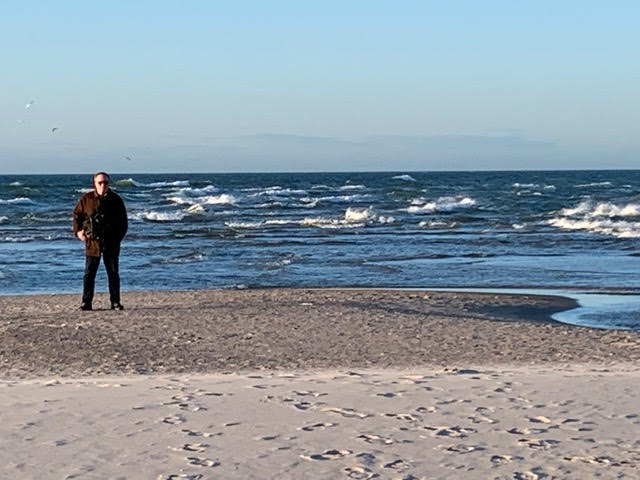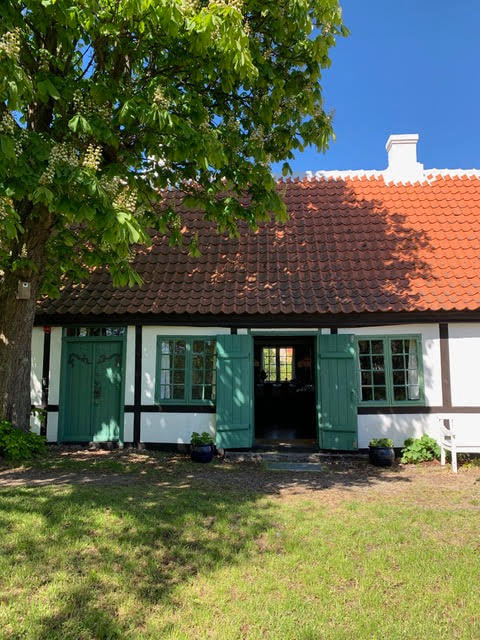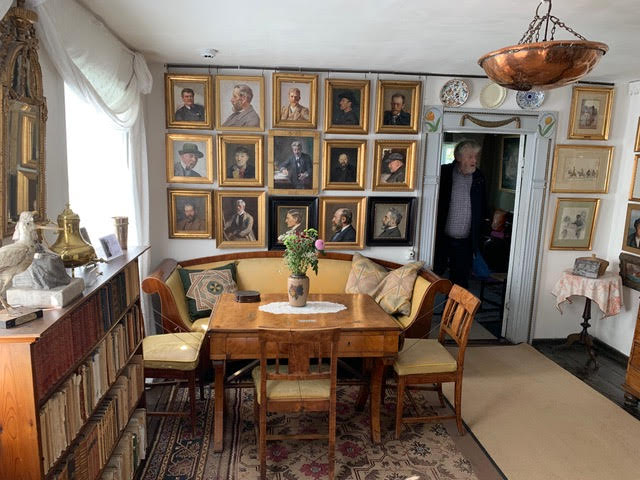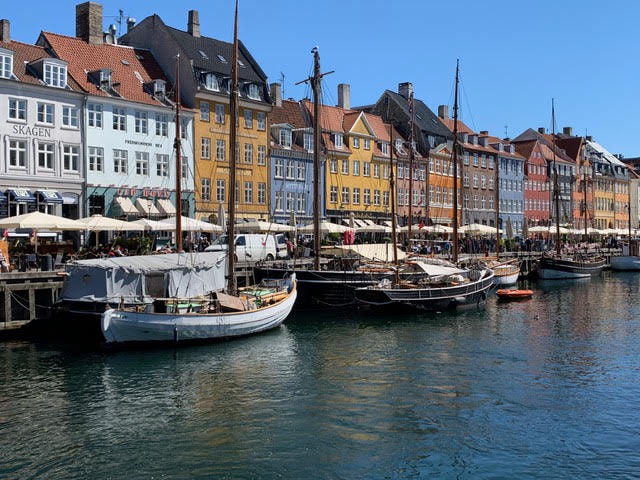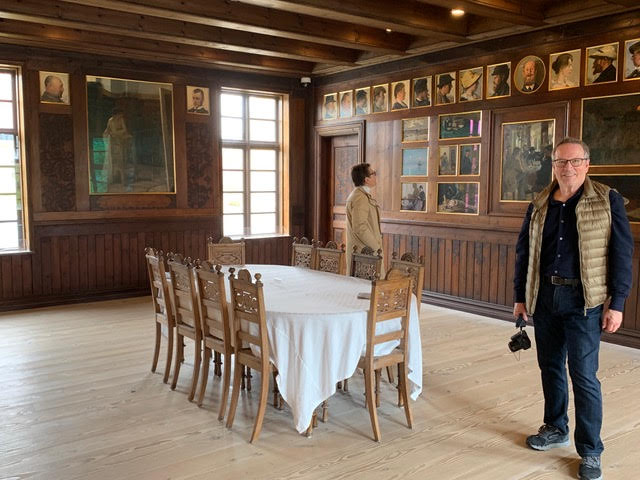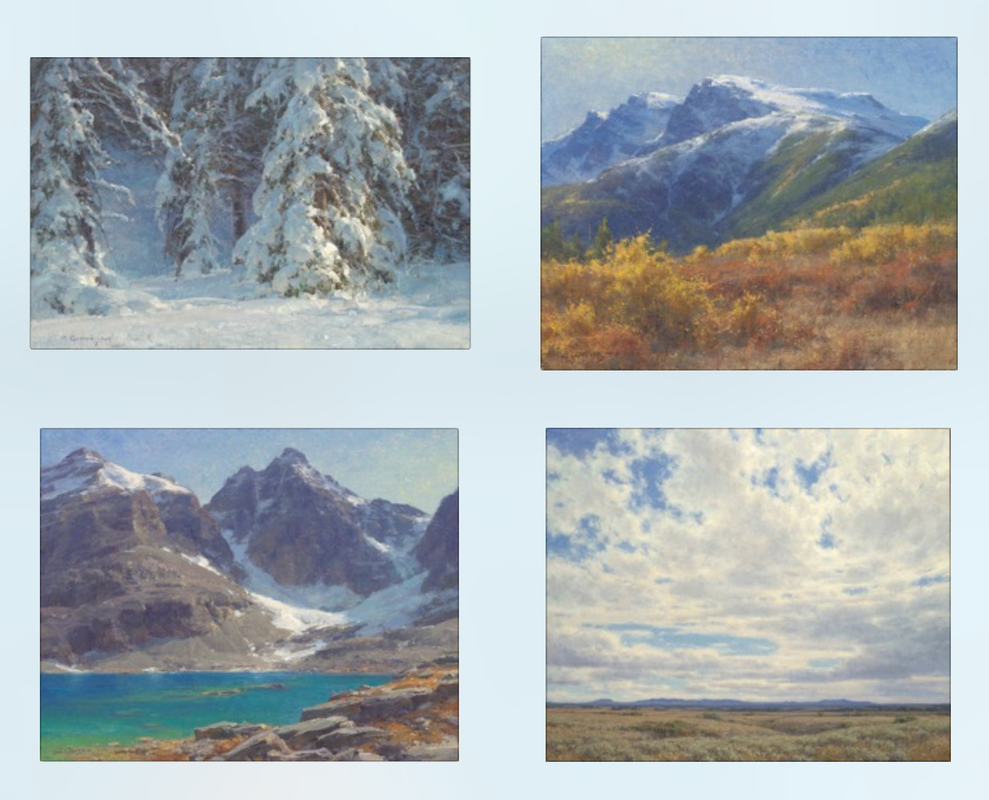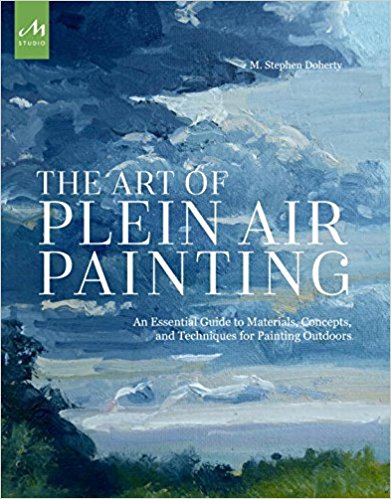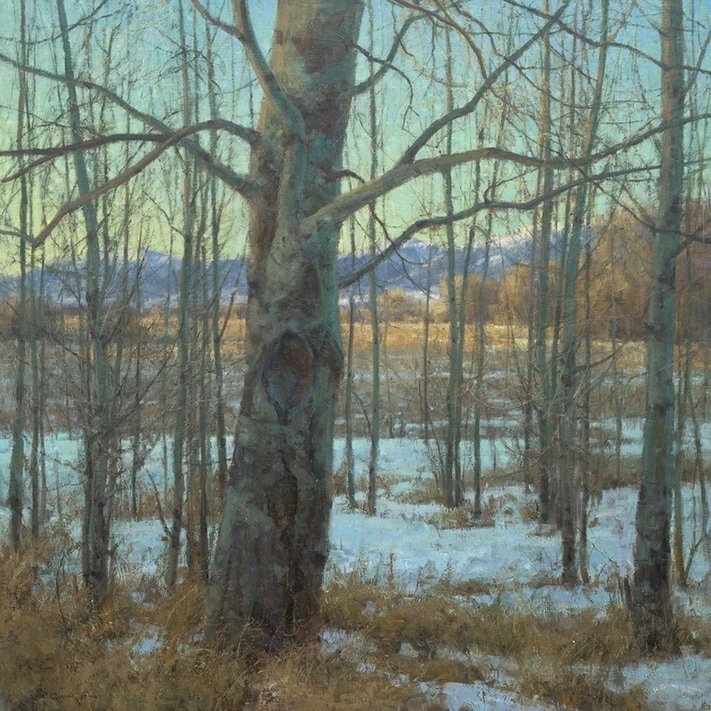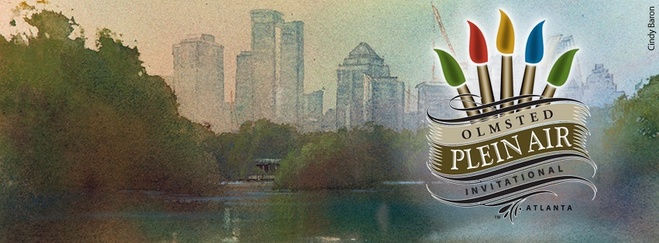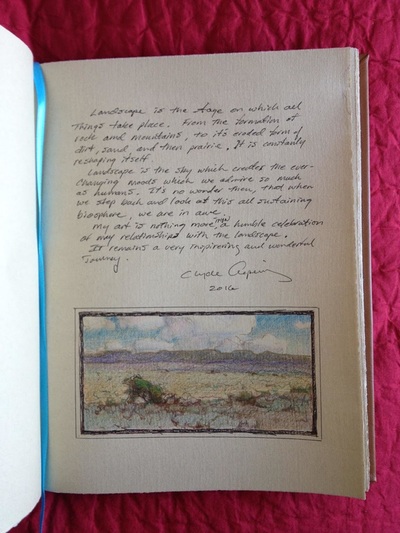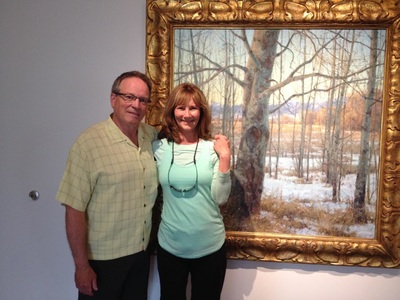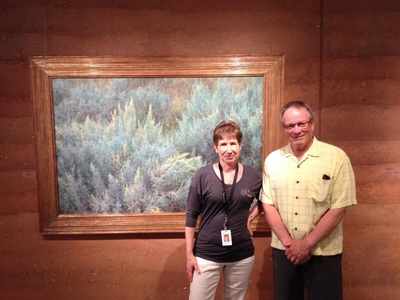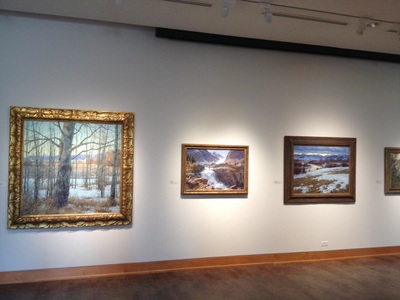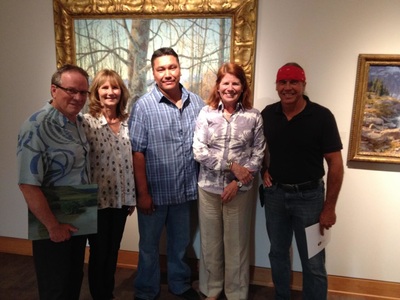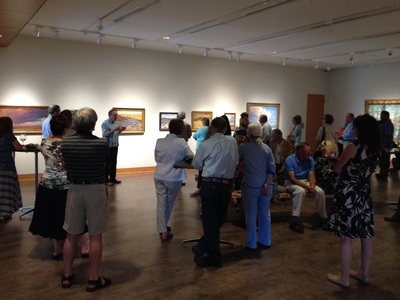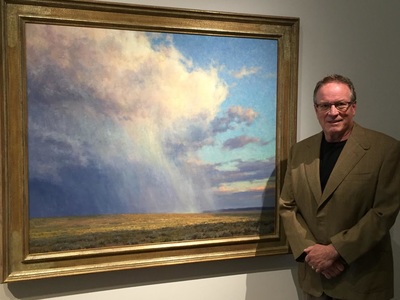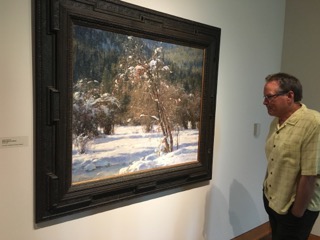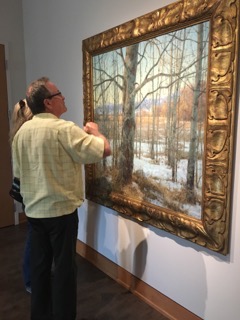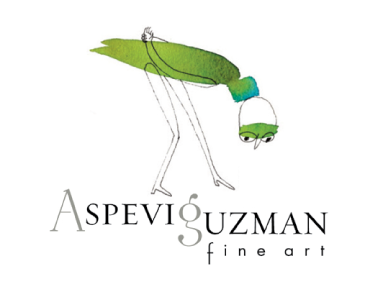John Singer Sargent (January 12, 1856 – April 14, 1925) was an American artist, considered the "leading portrait painter of his generation." He created roughly 900 oil paintings and more than 2,000 watercolors, as well as countless sketches and charcoal drawings. His impressionistic work is much beloved to this day. In 1916 - he painted Lake O'Hara in the Canadian Rockies. It is a stunning piece. Clyde Aspevig saw this painting at the Fogg Art Museum at Harvard in 1975. He and his wife Carol have spent many happy days hiking through this area, and recently did his own view of Lake O’Hara from Sargent Point in celebration of the master. It measures 60 x 96 inches. Clyde reached out to share the piece with Richard Ormond - one of the foremost authorities on John Singer Sargent and the former deputy director of the National Portrait Gallery and director of the National Maritime Museum and Royal Observatory in Greenwich England. Ormond's reply is below: Dear Clyde, The catalogues have arrived for which best thanks. I wish I could see your paintings in the flesh, but even in reproduction they give great pleasure capturing the spirit of the west, those sweeping views across the prairie to distant mountains, great skies, mountains up-close, placid lakes and snow scenes. But you do near as well as far, and I enjoyed your close-ups of streams and plants. It was a clever idea to match more finished works with premiere coup sketches in the spreads. You don't include people but humanity is everywhere implied in the spectacle of nature. I appreciated your kind words about my Sargent work. Like artists, art historians cast their work on the water never knowing if it will sink or swim, be appreciated and read, strike a chord and give pleasure, or sink without trace to the basement. That I have had so many responses to the Sargent catalogue raisonne makes the effort seem worthwhile and gives me the uplift to continue my work. All good wishes Richard Another masterful painter, Ian McKibben White, had this to say about Clyde's new "Lake O'Hara." "Mostly, Clyde, I want to enthuse about your magnificent painting of Lake O'Hara. Your "biggest painting ever." It's a real zinger! How big is it? Right up there on the scale of those Thomas Morans in Washington, D.C. I found as I study it, my eye travels into the painting at different speeds. I follow the logs from their tips above water down their submerged lengths to luxuriate in the depths of the emerald green water. When I surface I go left around the line of shallow rocks to find the opening to the far reaches of the lake. My eye climbs the reflection of the sunlit butte and past it, zigzagging up the gorge... presumably the water source that supplies the lake from the snow above. I cross the snow fields and exit into the clouds in the sky. It's been an exhilarating journey. Now, I back off to take in the composition as a whole and admire the stands of trees left and right of center stage as if waiting in the wings to take part in the drama. In your honor and for a better chance to study the painting over time, I have made it my computer screen background image." More about Ian McKibben White and his work can be found here. A bit about “The Arid West” and “Conifer Hillside” by Clyde Aspevig....
"From the arid deserts of the West, to the lush conifer forest behind my studio, I find the never ending spectacle of fractals shaped by texture, color and light. I am particularly interested in a flattened sense of space in both paintings which eludes to the duality between the abstract and the representational. It gives the viewer multiple ways to interpret and enjoy the paintings. “Pony, Montana” by Clyde Aspevig is about metaphors. There is a story behind every object, manmade or not, in the painting. The work is meant to provoke conversation. This spring, we had a fantastic couple weeks in Berlin, Germany; Copenhagen and Northern Denmark, soaking up art and history. We spent time in Skagen, and the northernmost tip of Denmark, where the Skagen School of Painters had their art colony at the turn of the 20th century. Some of the highlights we wanted to share are below. - Clyde & Carol
"Family Ties" 48” x 48”
oil on linen by Clyde Aspevig All paintings originate in the mind of an artist through an emotional reaction to an experience. Being human, we like to impose our ideas on these emotions as a way to enhance and remember the experience. Transcending the ordinary is one of the primary goals of the visual arts, and that is why the" idea "becomes the most essential part of its success or failure. It doesn't mean that the viewer of such art immediately understands the symbolism or metaphors that take shape in the process of developing an idea… it means that the artist uses the tools of technique in a more meaningful and profound way that will hopefully entice further inspection and wonderment. FAMILY TIES, a 48 x 48 inch oil on linen, began as an emotional reaction to the view of the aspen grove out our window. Aspen are considered a weed, and they are attached to each other via a root system like our own human nervous system. The mother tree in this scene is the nurturing source of the grove. My last name is also derived from the word aspen. In a way, I see the tree as my mother, rooted in the earth that sustains us. After living with the grove for a full season on our new property, I chose March as the month to paint the view…. on the edge of spring, but still melancholy enough to satisfy my Nordic roots. I think the metaphors attached to the seasons in nature are obvious, but never boring, and constantly stirring our emotions in different ways as evident in our music, poetry, and fiction writing over time. The little aspen grove begins to inspire new thoughts and ideas as I experienced the character of its nuances through the seasons. During my period of observation, I noticed the repeating shapes in different forms …fractals, musicality, and the duality between the representational world and the birth of the abstract as another way to see the same image. At the time I was developing these ideas, I just happened to be reading a book about the history of Echoes from the ancient Greeks to modern time. Trying to paint the idea of an echo on a flat, two dimensional surface using an aspen grove as the subject was very intriguing. Creating texture and scratching out surfaces in a painting to achieve an effect is nothing new. It's been done before. But using the idea of an echo to facilitate your image created a more powerful platform to express my idea. You can create soft and hard edges and a lot of texture all day long, but it has to have content of idea in order to become engaging to the human mind. When you examine the surface texture of “FAMILY TIES”, you will see the ghosts of where the branches and trunks of trees were over a period of time…. their echo. The branches, the snow, and the sky are scratched, scrapped, and painted in layers…representing movement through time. I think you can sense the vibrations, the syncopation, the sensuousness, of a living piece of land. It is not static, it is moving through time in an endless cycle of growth and change. I tried to make each square inch of the canvas an individual journey of discovery that exudes these ideas. In the end, whether the idea succeeds or not depends on how far the viewer wants to go with it. Ultimately, the glance through an aspen grove can be just a brief visual delight …. but, with a little help from the artist, it can also evolve into a wonderful journey of discovery and imagination. Clyde Aspevig Announcing the 2017 Awards Judges
Olmsted Plein Air Invitational - April 2 - 9, 2017 After seven days of capturing Atlanta's landscapes and cityscapes, an expert panel of three Awards Judges will evaluate the paintings produced by our nationally recognized Master Artists. Each artist will be vying for their piece of the purse plus the prestige of winning the Olmsted Plein Air Invitational. Paintings will be first offered for sale throughout the week at events and the Artists will select their top three that will be judged at the exclusive, ticketed Awards & Collector’s Soirée on Saturday, April 8th. All remaining paintings will be available for purchase to the public on Sunday April 9th. Clyde Aspevig's personal and artistic horizons have unfolded expansively since his childhood on a Montana farm near the Canadian border. That period of geographical and cultural isolation was in retrospect a blessing for the artist he recalls. "Because I grew up in a vacuum in Montana, I wasn't taught the cliches." He sees such naivete as allowing him to be more open to everything around him, which is especially evident in his latest works. His peripatetic field easel now ranges across the wild mountains and prairies of Montana, Death Valley, Adirondacks, rocky North Atlantic coast, Scandinavian fjords and the well-tended hillside estates of Tuscany. Growing up, he witnessed the alternatingly painful and joyful cycles of agricultural life. He was unusually fortunate to be encouraged by his family in the pursuits of art and appreciation of music. Clyde learned early on to work hard and persevere against obstacles natural and manmade. Rather than scoffing at or demeaning Clyde's interests, Clyde's father, the practical but open-minded farmer, bought his twelve-year-old son's first painting. Mr. Aspevig considers his paintings as old friends and visual souvenirs of places experienced in his life. The viewer, too, shares in Clyde's magical evocations of the landscapes that touched him. Dan Amos is the chairman and chief executive officer of Aflac Incorporated and avid Impressionist art collector. Aflac is a Fortune 500 company that insures more than 50 million people worldwide. He also is responsible for launching the company's national advertising program featuring the popular Aflac Duck. Today, Aflac is a top national brand and was named by FORTUNE magazine in 2016 as one of America's Most Admired Companies for the 15th year. In 2013, Mr. Amos was proud to accept the Salute to Greatness Award from the Dr. Martin Luther King, Jr. Center in Atlanta joining a distinguished list of past recipients that include former United States Senator and Secretary of State Hillary Clinton, entertainer Oprah Winfrey, Ambassador Andrew J. Young, U.S. Poet Laureate Maya Angelou, athlete Ervin "Magic" Johnson and singers Bono and Stevie Wonder. Mr. Amos has also received the Dr. Martin Luther King Jr. Unity Award and the Anti-Defamation League's Torch of Liberty Award. A past member of the board of trustees of Children's Healthcare of Atlanta, Mr. Amos also serves on the board of the House of Mercy of Columbus and previously served as a member of the Consumer Affairs Advisory Committee of the Securities and Exchange Commission. He is the former chairman of the board of the Japan America Society of Georgia and former chairman of the University of Georgia Foundation. He holds a bachelor's degree from the University of Georgia in risk management. Wes Fraser was born in Savannah, Georgia, and came of age on Hilton Head Island, SC. Fraser served for 9 years as a Board Commissioner of the South Carolina Art’s Commission; he is an artist member of the Salmagundi Club, a signature member of the prestigious PAPA (Plein Air Painters of America) and a signature member of the California Art Club. Fraser has been honored with 8 solo museum exhibitions in the Midwest, the Southeast, and California. His most recent exhibition titled A Native Son: Paintings of West Fraser was at the Telfair Museum of Art, Savannah GA, in 2012. In January 2017 Fraser will have his 3rd one man show at the Gibbes Museum of Art in Charleston, S.C. There will be a smaller traveling exhibit featured in the fall at the Coastal Discovery Museum in Hilton Head Island, S.C. West Fraser has been published extensively, including features in Art and Antiques, Plein Air Magazine, The Robb Report, Southern Accents, American Artist, Nautical Quarterly, Southwest Art, Art and Antiques, Charleston Magazine, and Garden & Gun, to name a few. His second book, Painting the Southern Coast: The Art of West Fraser, was released by the University of South Carolina Press in July 2016. This book represents over 40 years of West’s paintings of the Southeastern seaboard starting around Georgetown, S.C. and ending in St. Augustine, Fla. His paintings are in 9 museum collections and the White House Historic Society as well as numerous significant private and corporate collections nationwide. He graduated from the University of Georgia with a Bachelor of Fine Art’s degree in 1979. In early June, 2016, Clyde's show "Landscape & Beyond" opened at the Brinton Museum in Big Horn, Wyoming. Opening weekend featured an artist's dinner and a gallery walk with discussion from Clyde. |
|
©
Clyde Aspevig - Aspevig Guzman Fine Art
Clyde and his wife - Carol Guzman - both paint under Aspevig Guzman Fine Art
|

